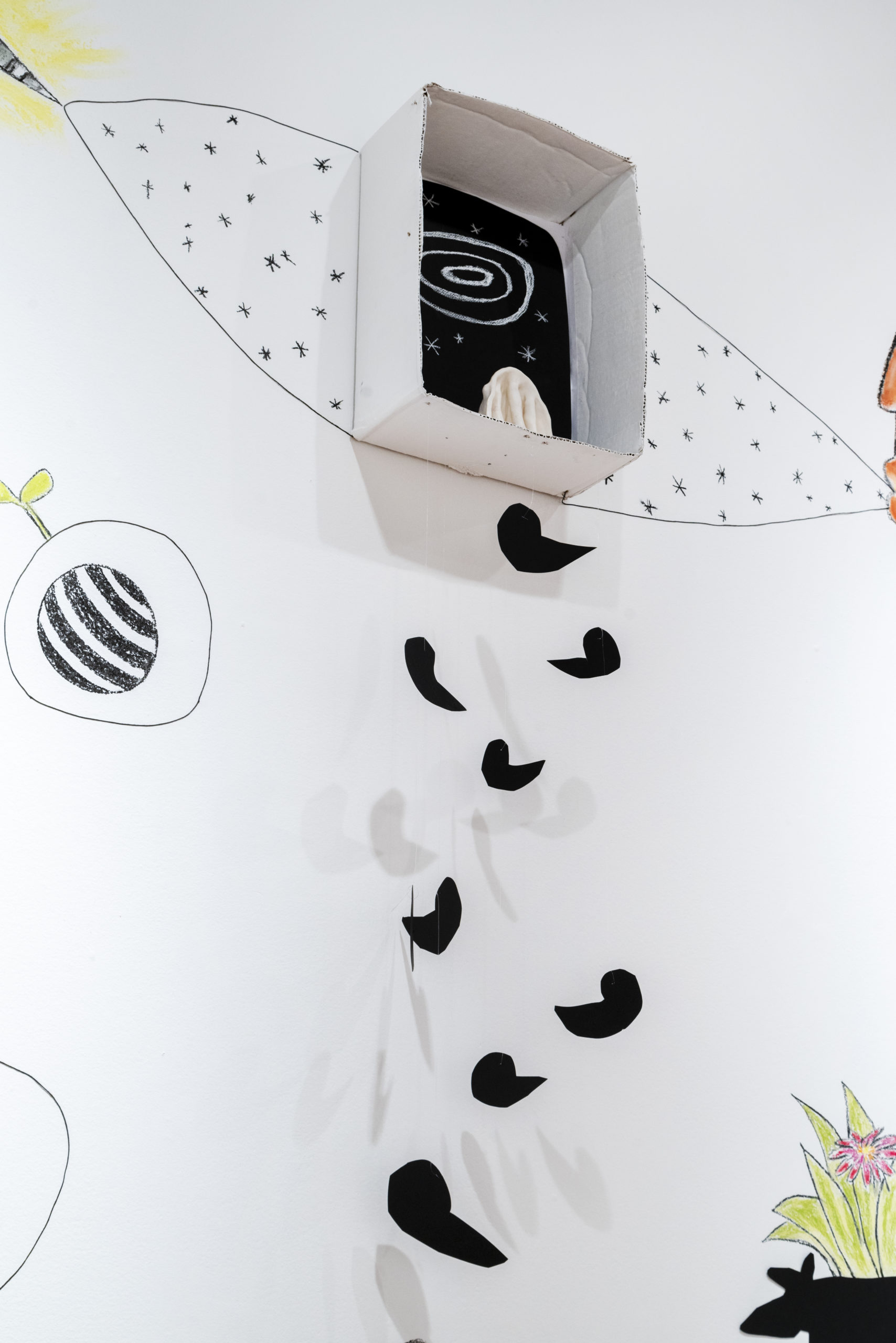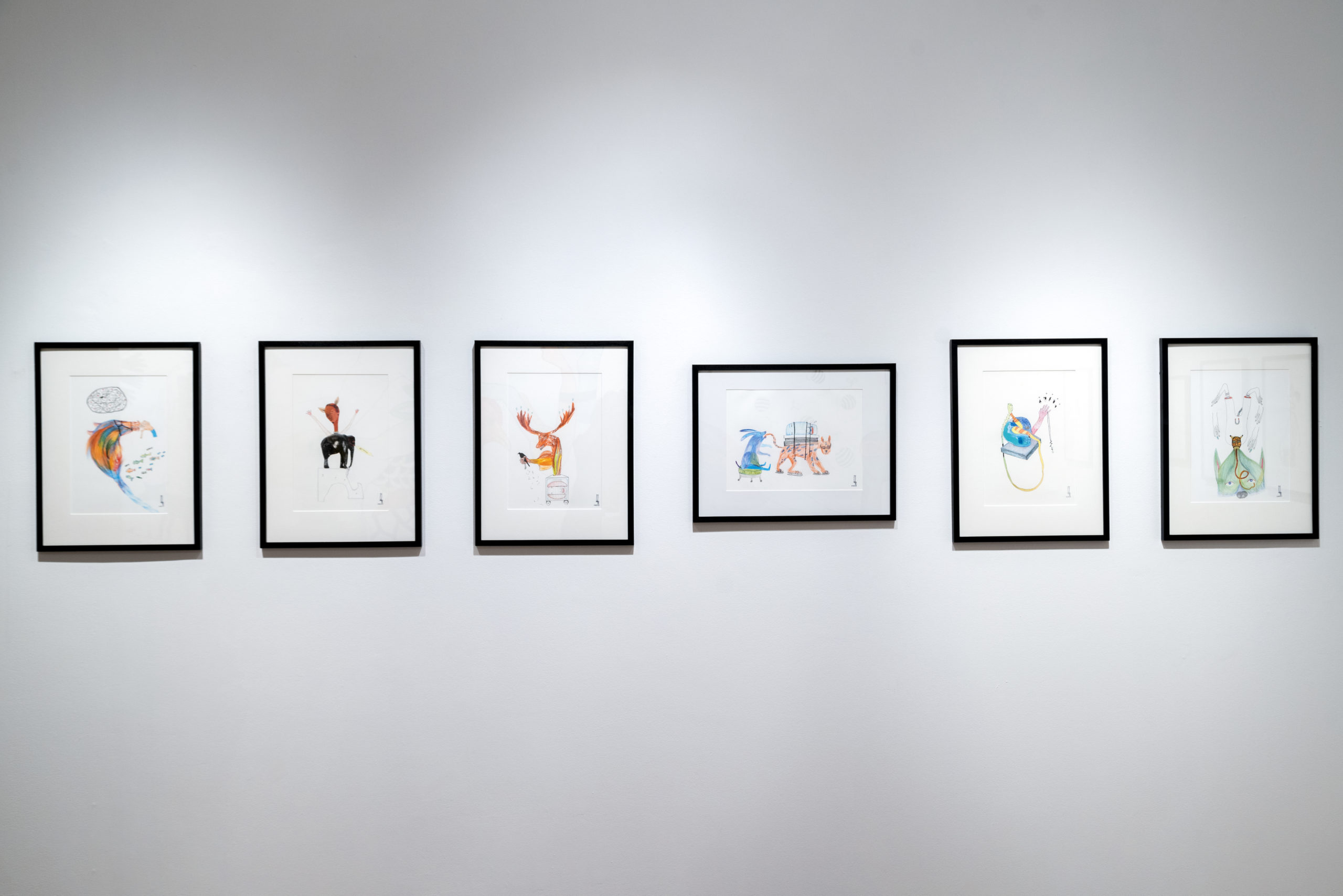The Z’otz* Collective presents collaborative drawings, sculptures, and an ephemeral installation created on the wall of the gallery with charcoal, pastel, pencil, collage, boxes and found objects. This installation is a platform that incorporates elements and iconography of cultural hybridity, such as nichos (niches). The artists are intrigued by the idea of a niche as a space “in which to nest”, a place to incubate, collect, investigate, and share stories. The Roman Catholic nicho, usually made of a wood or tin box, housed religious objects and served as small shrines, to connect the believers to their spirituality. In Pre-Hispanic civilizations, niches were used as architectural elements in the temples.
The contemporary niches in this installation are made of painted boxes of various sizes and shapes, adhered to the wall. They house drawings and collected objects. The edges of each niche serve as boundaries to divide one story from another. At the same time, all the niches work together within the larger installation to become a broader story; they form a community that interconnects, but they also leave space for the viewer to invent his or her own stories within. In this way, the viewer is part of the collaborative process.
Documentation by: Yuula Benivolzki
Documentation
Artist Bio
Z’otz* Collective
Z’otz* Collective was formed out of a shared interest in collaborative art making, by three artists of Latin American heritage living in Toronto: Nahúm Flores, Erik Jerezano, and Ilyana Martínez. The direct approach of drawing, their primary means of expression, enables them to create quirky subjects and hybrid creatures. They use humour and play to examine the immigrant experiences of displacement, transition and transformation. The work connects to the storytelling traditions of their cultures, with symbols and mythological beings that transition between the individual and collective dynamic.
To create their works, the artists use a system of rotation: they work on different pieces at the same time and then exchange them. Intuition and chance drive the process, as they respond to each other’s forms and marks. They converse with one another in a language they invent through the act of creating in community.













